Enming Luo
Zero-Shot Image Moderation in Google Ads with LLM-Assisted Textual Descriptions and Cross-modal Co-embeddings
Dec 18, 2024

Abstract:We present a scalable and agile approach for ads image content moderation at Google, addressing the challenges of moderating massive volumes of ads with diverse content and evolving policies. The proposed method utilizes human-curated textual descriptions and cross-modal text-image co-embeddings to enable zero-shot classification of policy violating ads images, bypassing the need for extensive supervised training data and human labeling. By leveraging large language models (LLMs) and user expertise, the system generates and refines a comprehensive set of textual descriptions representing policy guidelines. During inference, co-embedding similarity between incoming images and the textual descriptions serves as a reliable signal for policy violation detection, enabling efficient and adaptable ads content moderation. Evaluation results demonstrate the efficacy of this framework in significantly boosting the detection of policy violating content.
How Transformers Solve Propositional Logic Problems: A Mechanistic Analysis
Nov 07, 2024



Abstract:Large language models (LLMs) have shown amazing performance on tasks that require planning and reasoning. Motivated by this, we investigate the internal mechanisms that underpin a network's ability to perform complex logical reasoning. We first construct a synthetic propositional logic problem that serves as a concrete test-bed for network training and evaluation. Crucially, this problem demands nontrivial planning to solve, but we can train a small transformer to achieve perfect accuracy. Building on our set-up, we then pursue an understanding of precisely how a three-layer transformer, trained from scratch, solves this problem. We are able to identify certain "planning" and "reasoning" circuits in the network that necessitate cooperation between the attention blocks to implement the desired logic. To expand our findings, we then study a larger model, Mistral 7B. Using activation patching, we characterize internal components that are critical in solving our logic problem. Overall, our work systemically uncovers novel aspects of small and large transformers, and continues the study of how they plan and reason.
Why Fine-grained Labels in Pretraining Benefit Generalization?
Oct 30, 2024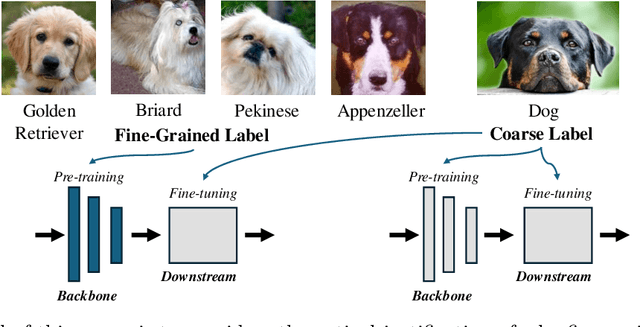

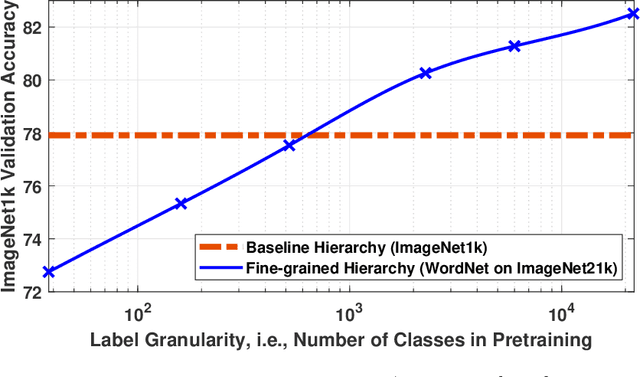

Abstract:Recent studies show that pretraining a deep neural network with fine-grained labeled data, followed by fine-tuning on coarse-labeled data for downstream tasks, often yields better generalization than pretraining with coarse-labeled data. While there is ample empirical evidence supporting this, the theoretical justification remains an open problem. This paper addresses this gap by introducing a "hierarchical multi-view" structure to confine the input data distribution. Under this framework, we prove that: 1) coarse-grained pretraining only allows a neural network to learn the common features well, while 2) fine-grained pretraining helps the network learn the rare features in addition to the common ones, leading to improved accuracy on hard downstream test samples.
Modeling Collaborator: Enabling Subjective Vision Classification With Minimal Human Effort via LLM Tool-Use
Mar 05, 2024Abstract:From content moderation to wildlife conservation, the number of applications that require models to recognize nuanced or subjective visual concepts is growing. Traditionally, developing classifiers for such concepts requires substantial manual effort measured in hours, days, or even months to identify and annotate data needed for training. Even with recently proposed Agile Modeling techniques, which enable rapid bootstrapping of image classifiers, users are still required to spend 30 minutes or more of monotonous, repetitive data labeling just to train a single classifier. Drawing on Fiske's Cognitive Miser theory, we propose a new framework that alleviates manual effort by replacing human labeling with natural language interactions, reducing the total effort required to define a concept by an order of magnitude: from labeling 2,000 images to only 100 plus some natural language interactions. Our framework leverages recent advances in foundation models, both large language models and vision-language models, to carve out the concept space through conversation and by automatically labeling training data points. Most importantly, our framework eliminates the need for crowd-sourced annotations. Moreover, our framework ultimately produces lightweight classification models that are deployable in cost-sensitive scenarios. Across 15 subjective concepts and across 2 public image classification datasets, our trained models outperform traditional Agile Modeling as well as state-of-the-art zero-shot classification models like ALIGN, CLIP, CuPL, and large visual question-answering models like PaLI-X.
Scaling Up LLM Reviews for Google Ads Content Moderation
Feb 07, 2024
Abstract:Large language models (LLMs) are powerful tools for content moderation, but their inference costs and latency make them prohibitive for casual use on large datasets, such as the Google Ads repository. This study proposes a method for scaling up LLM reviews for content moderation in Google Ads. First, we use heuristics to select candidates via filtering and duplicate removal, and create clusters of ads for which we select one representative ad per cluster. We then use LLMs to review only the representative ads. Finally, we propagate the LLM decisions for the representative ads back to their clusters. This method reduces the number of reviews by more than 3 orders of magnitude while achieving a 2x recall compared to a baseline non-LLM model. The success of this approach is a strong function of the representations used in clustering and label propagation; we found that cross-modal similarity representations yield better results than uni-modal representations.
Visual Program Distillation: Distilling Tools and Programmatic Reasoning into Vision-Language Models
Dec 05, 2023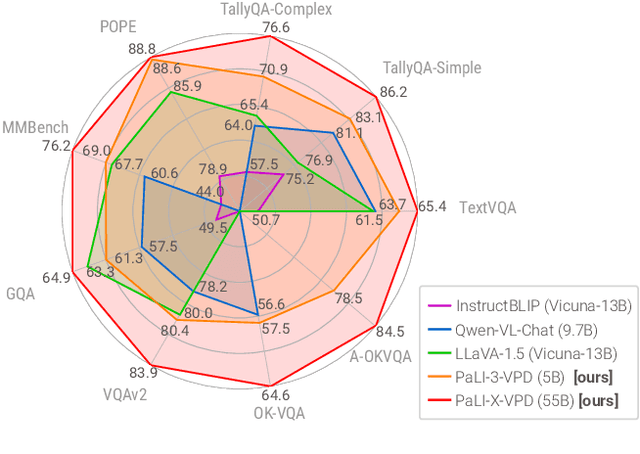
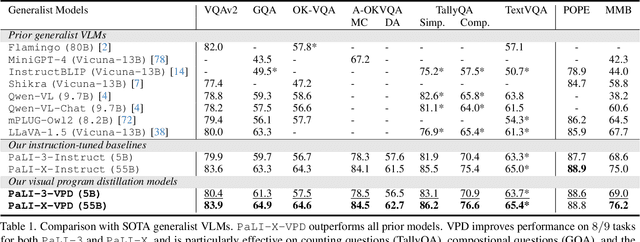
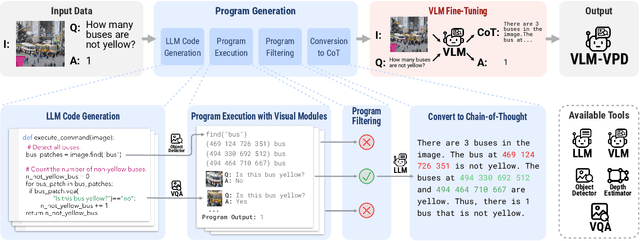
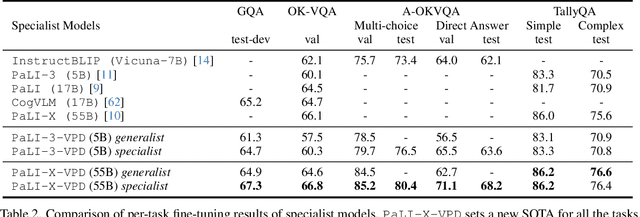
Abstract:Solving complex visual tasks such as "Who invented the musical instrument on the right?" involves a composition of skills: understanding space, recognizing instruments, and also retrieving prior knowledge. Recent work shows promise by decomposing such tasks using a large language model (LLM) into an executable program that invokes specialized vision models. However, generated programs are error-prone: they omit necessary steps, include spurious ones, and are unable to recover when the specialized models give incorrect outputs. Moreover, they require loading multiple models, incurring high latency and computation costs. We propose Visual Program Distillation (VPD), an instruction tuning framework that produces a vision-language model (VLM) capable of solving complex visual tasks with a single forward pass. VPD distills the reasoning ability of LLMs by using them to sample multiple candidate programs, which are then executed and verified to identify a correct one. It translates each correct program into a language description of the reasoning steps, which are then distilled into a VLM. Extensive experiments show that VPD improves the VLM's ability to count, understand spatial relations, and reason compositionally. Our VPD-trained PaLI-X outperforms all prior VLMs, achieving state-of-the-art performance across complex vision tasks, including MMBench, OK-VQA, A-OKVQA, TallyQA, POPE, and Hateful Memes. An evaluation with human annotators also confirms that VPD improves model response factuality and consistency. Finally, experiments on content moderation demonstrate that VPD is also helpful for adaptation to real-world applications with limited data.
Towards Understanding the Effect of Pretraining Label Granularity
Mar 29, 2023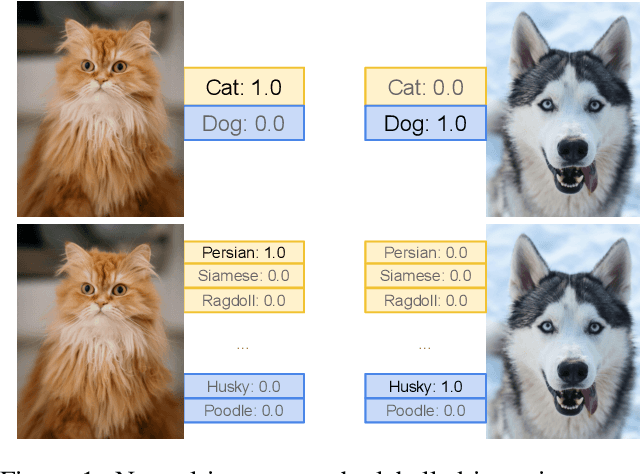

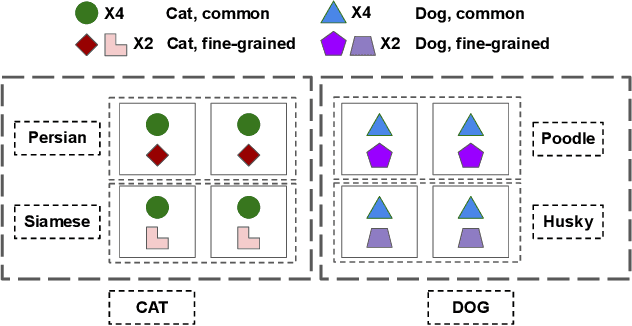
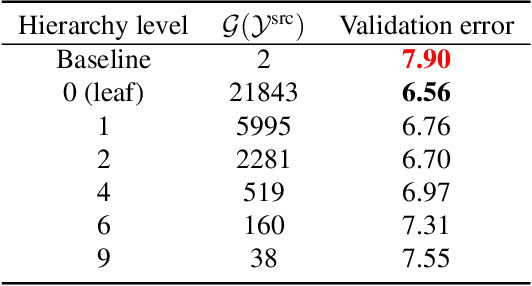
Abstract:In this paper, we study how pretraining label granularity affects the generalization of deep neural networks in image classification tasks. We focus on the "fine-to-coarse" transfer learning setting where the pretraining label is more fine-grained than that of the target problem. We experiment with this method using the label hierarchy of iNaturalist 2021, and observe a 8.76% relative improvement of the error rate over the baseline. We find the following conditions are key for the improvement: 1) the pretraining dataset has a strong and meaningful label hierarchy, 2) its label function strongly aligns with that of the target task, and most importantly, 3) an appropriate level of pretraining label granularity is chosen. The importance of pretraining label granularity is further corroborated by our transfer learning experiments on ImageNet. Most notably, we show that pretraining at the leaf labels of ImageNet21k produces better transfer results on ImageNet1k than pretraining at other coarser granularity levels, which supports the common practice. Theoretically, through an analysis on a two-layer convolutional ReLU network, we prove that: 1) models trained on coarse-grained labels only respond strongly to the common or "easy-to-learn" features; 2) with the dataset satisfying the right conditions, fine-grained pretraining encourages the model to also learn rarer or "harder-to-learn" features well, thus improving the model's generalization.
Agile Modeling: Image Classification with Domain Experts in the Loop
Feb 25, 2023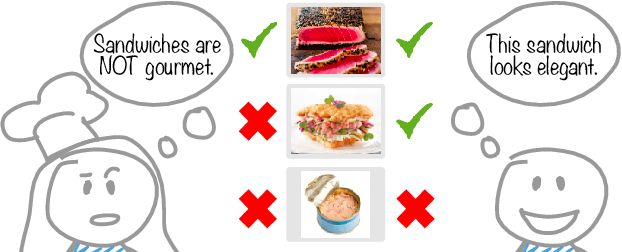


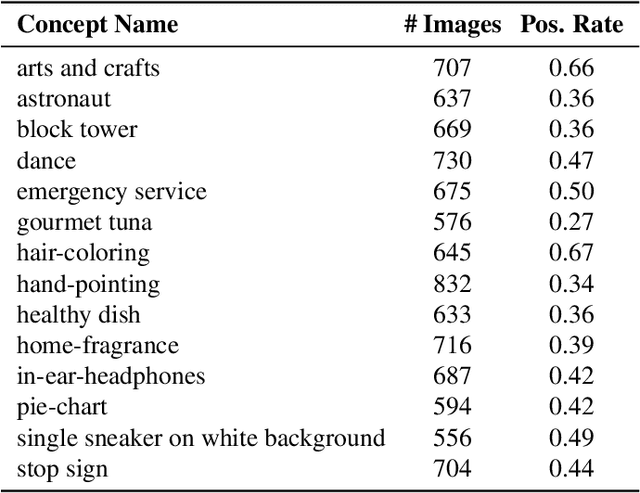
Abstract:Machine learning is not readily accessible to domain experts from many fields, blocked by issues ranging from data mining to model training. We argue that domain experts should be at the center of the modeling process, and we introduce the "Agile Modeling" problem: the process of turning any visual concept from an idea into a well-trained ML classifier through a human-in-the-loop interaction driven by the domain expert in a way that minimizes domain expert time. We propose a solution to the problem that enables domain experts to create classifiers in real-time and build upon recent advances in image-text co-embeddings such as CLIP or ALIGN to implement it. We show the feasibility of this solution through live experiments with 14 domain experts, each modeling their own concept. Finally, we compare a domain expert driven process with the traditional crowdsourcing paradigm and find that difficult concepts see pronounced improvements with domain experts.
NoiseRank: Unsupervised Label Noise Reduction with Dependence Models
Mar 15, 2020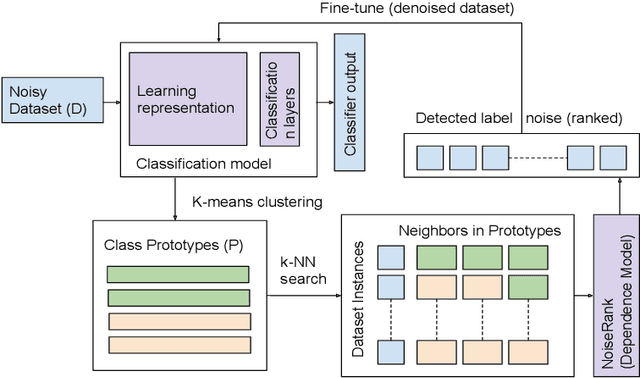

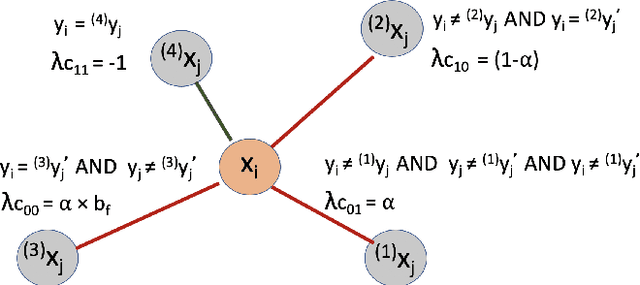
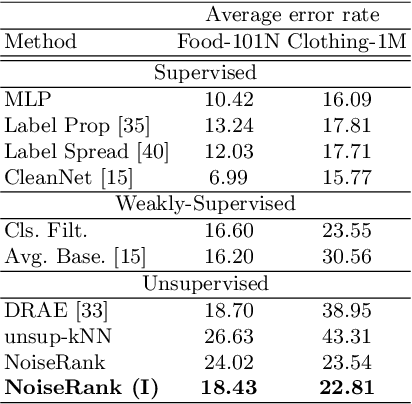
Abstract:Label noise is increasingly prevalent in datasets acquired from noisy channels. Existing approaches that detect and remove label noise generally rely on some form of supervision, which is not scalable and error-prone. In this paper, we propose NoiseRank, for unsupervised label noise reduction using Markov Random Fields (MRF). We construct a dependence model to estimate the posterior probability of an instance being incorrectly labeled given the dataset, and rank instances based on their estimated probabilities. Our method 1) Does not require supervision from ground-truth labels, or priors on label or noise distribution. 2) It is interpretable by design, enabling transparency in label noise removal. 3) It is agnostic to classifier architecture/optimization framework and content modality. These advantages enable wide applicability in real noise settings, unlike prior works constrained by one or more conditions. NoiseRank improves state-of-the-art classification on Food101-N (~20% noise), and is effective on high noise Clothing-1M (~40% noise).
Adaptive Image Denoising by Mixture Adaptation
Jun 25, 2016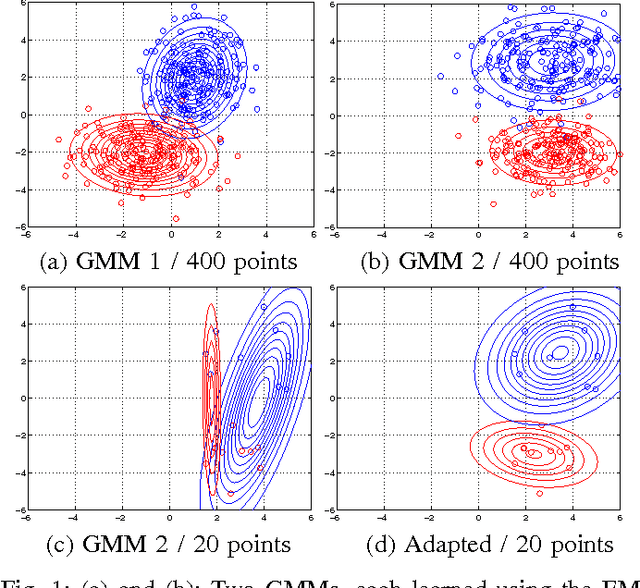

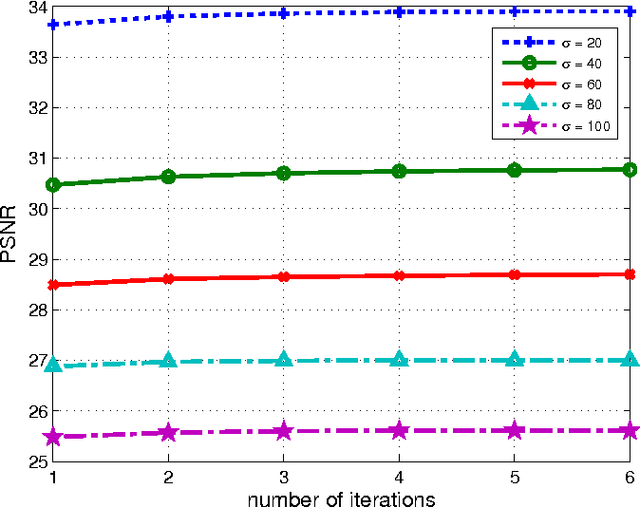
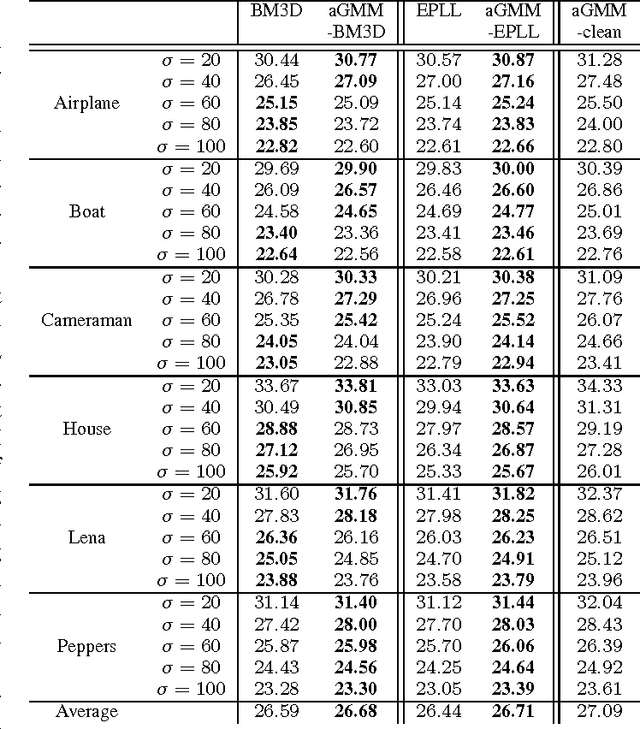
Abstract:We propose an adaptive learning procedure to learn patch-based image priors for image denoising. The new algorithm, called the Expectation-Maximization (EM) adaptation, takes a generic prior learned from a generic external database and adapts it to the noisy image to generate a specific prior. Different from existing methods that combine internal and external statistics in ad-hoc ways, the proposed algorithm is rigorously derived from a Bayesian hyper-prior perspective. There are two contributions of this paper: First, we provide full derivation of the EM adaptation algorithm and demonstrate methods to improve the computational complexity. Second, in the absence of the latent clean image, we show how EM adaptation can be modified based on pre-filtering. Experimental results show that the proposed adaptation algorithm yields consistently better denoising results than the one without adaptation and is superior to several state-of-the-art algorithms.
 Add to Chrome
Add to Chrome Add to Firefox
Add to Firefox Add to Edge
Add to Edge